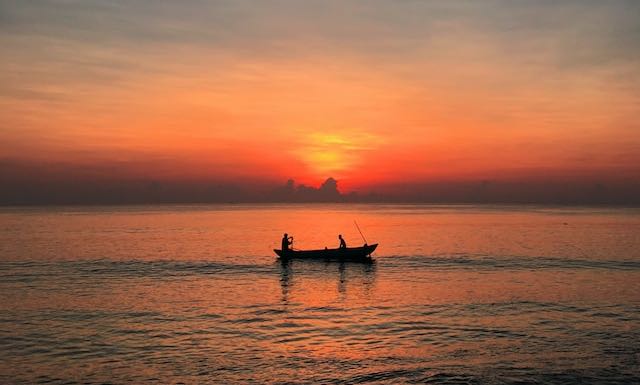 What does ‘independence’ mean for citizens of Sri Lanka? Does shaking off the yolk of foreign rule automatically mean ‘independence’ and ‘liberation’ for everyone? Or is independence a majoritarian gain, more for some and less for others? Anupama Ranawana discusses ‘independence’ for the Veddah community in Sri Lanka — present on the island perhaps from pre-historic times, fighting for rights of access even today,
What does ‘independence’ mean for citizens of Sri Lanka? Does shaking off the yolk of foreign rule automatically mean ‘independence’ and ‘liberation’ for everyone? Or is independence a majoritarian gain, more for some and less for others? Anupama Ranawana discusses ‘independence’ for the Veddah community in Sri Lanka — present on the island perhaps from pre-historic times, fighting for rights of access even today,
To reflect on Sri Lanka 75 years on from her independence is a strange exercise. One cannot resist the questions: Whose independence? Independence on whose terms? Has liberation been achieved? Who has been liberated?
The complexities of Sri Lanka are multiple, a country that is still in conflict, in a period termed ‘post-conflict’, and now facing a severe economic crisis. This is a Sri Lanka in which some voices are heard and platformed, whilst others are, to use Arundhati Roy’s phrase, ‘deliberately silenced’. A Sri Lanka where thousands of residents in shanty towns lost their lives and livelihoods in a series of slum clearances for the sake of building a Port City project. A Sri Lanka where the North and East still lives under heavy militarisation.
It is hardly any wonder then, that we saw the kind of anger that poured onto the streets in the spring of 2022. Much has been written of the recent aragalaya (‘struggle’) — in this blog, as well as elsewhere. The aragalaya, some argue, started with the farmers protests in April 2021 as they raised concerns over the almost overnight switch to organic farming. Farmers were increasingly concerned about crop yields in the first months of the cultivation season (April–May), and the subsequent food shortages catalysed an already difficult economic situation.
As the economic, and foreign exchange, crisis deepened, scattered protests began all over the country and eventually coalesced into a daily gathering in Colombo’s Galle Face Green, with the demand that the then President Gotabaya Rajapaksa resign. The aragalaya brought together activists and non-activists from various walks of life, including from the Veddah, Sri Lanka’s ‘forest-dweller’ community. The Veddah not only extended their solidarity with their presence at the protests but, when aragalaya activist Wasantha Mudalige was arrested, the Veddah Chief Uru Warige Wannila Aththo spoke out against the arrest, calling the government’s actions ‘deplorable.’
Independence on whose terms? This is something that members of Veddah community may reflect on. The Veddahs, or Wanniyalaeto are, most argue, Sri Lanka’s first people, recognised as descendants of prehistoric humans who lived in the rain forests of Sri Lanka (Deraniyagala 1992). Some argue that the term ‘Veddah’ comes from the Pali word for ‘bowman’, and is also connected to ‘Vadi’ in ancient Sinhala which means ‘the one who roams the forest’ (Dharmadasa and Samarasinghe 1991). Blundell (2010) has suggested that the term originates in the Sanskrit ‘vyaadha’, a term that was applied to various hunting groups in southern Asia. Others, like the anthropologist Gananath Obeysekere (2022), agree that while Veddah may mean ‘hunter’, it was in reality a culturally designated term to denote ‘non-Buddhist’ which underscored the sinful nature of the non-Buddhist act of hunting. Obeysekere and others have also argued for an understanding of the Veddah community as more than the ‘fearsome savage’ of Western anthropological imaginings, a figure of a ‘wild man’ who becomes an object of fascination for foreign tourists.
What is perhaps interesting to note here is that it is this particular image of the wild primitive that has become most useful to governments and other agents who ‘sell’ Sri Lanka to foreign tourists. Ruwan Ranasinghe (2018), for example, notes that
the Vedda have become a money-driven, commodity-oriented group leading a hybrid life: one real and one for the sake of tourists’ amusement, reflecting alterations in their values.
Those who have studied the Veddah community indicate a complex and multi-layered society and history, with some belonging to a warrior class, others being farmers, and yet others holding a kind of kingship. Obeysekere argues that, for European anthropologists who focused on hunters and gatherers, it was difficult to differentiate between the ‘aristocratic’ and ‘village’ Veddahs because they ‘could not be differentiated from the generality of the Sinhala–Buddhist by European investigators’ (Obeysekere 2022:10). Blundell, Obeyesekere, and also Deraniyagala (1963), note that there was deep respect between the Veddah and Buddhist communities, and that some Veddah chieftains were prominent in armies of Buddhist kings. They also note the Buddhistisation of many Veddah communities, and various efforts to assimilate into the majority community. Obeyesekere in particular traces how many Veddahs, through marriage, relocation or social evolution, eventually became ‘Sinhala’. This paralleled the movement from hunting to agriculture, and then into Buddhism.
*
So, one can argue that there are members of the Veddah community in Sri Lanka who have resisted this process of dislocation and live in the traditional manner, and others who have Veddah heritage but are an undifferentiated part of the majority community. The latter claim their Sinhala-ness as their primary identity. De Silva (2011) notes that whilst most of the Veddah community that assimilated went through a process of Buddhistisation and Sinhalisation, a smaller number that sought refuge in the east of the country also ‘rapidly Tamilised’. Whilst pointing to the complexity of this history, anthropologists and historians agree that we should be alarmed at the significant reduction in the numbers of the Veddah community in the 19th and 20th centuries.
For centuries, the Veddah who resisted assimilation, have been battling external forces in order to preserve their traditions and culture. Similar to other minoritised communities in the country, the Veddahs in Sri Lanka have faced deteriorating livelihoods and relative deprivation due to administrative measures at the time of European colonisation and, after independence in 1948, due to mass scale developmental projects, and a political culture that seeks primarily to elevate and preserve the Sinhala–Buddhist nation.
James Brow (1976) noted that since 1891, Veddah society had been affected by a variety of exogenous factors, particularly changes in land tenure. Brow and others also point to land-grabbing that occurred as a result of the restructuring of agriculture, as well as major irrigation works such as the Gal Oya project (1948) which displaced the local Veddah community. De Silva (2011) highlights the British practice of confining the Veddahs to the ‘desolate’ lands of the Bintanna, as well as the takeover of traditional lands for coffee and tea plantations during European colonisation.
*
As mentioned earlier, the Veddah have been reduced to tourist attractions, so much so that in 2014 the Veddah leadership rejected government sponsorship for the celebration of the International Day of the World’s Indigenous People. They asked instead for investment in the community, and rights to their ancestral lands. The community has frequently clashed with the Sri Lankan government over this issue, and although an agreement to allow the Veddah limited use of the forest was granted, it was not implemented by the government. In 2014, Chief Uru Warige Wannila Aththo noted that
the forest is part and parcel of our lives. The forest was the home, school, temple, hospital and everything … today our children are not allowed into the forest since laws have been imposed against entering it.
The Chief continued his argument by noting that the only living example of the country’s history are the Veddah community, and they were fast facing extinction. He said that the forest is still a place which remains powerfully important in framing and sustaining their collective identity, and that government encroachment upon it places this identity at risk. Ranasinghe’s study of the Veddah community affirmed this, as his conversations with various members of the community in Dambana and Rathugala found that while there was an acceptance of working with the tourism industry, there was also resistance to the harm that tourism and government development schemes were bringing to traditional culture. As Ranasinghe notes:
They take tourists for site visits to see caves and their culture, but they do not like to take them to the forest due to the traditional barriers.
Similarly, Attanapola and Lund’s (2013) interviews with young members of the community in the village of Dambane noted that while aware of the kind of ‘primitive professionals’ that mere survival has led them to, they remain destitute because of the limited access to forests. ‘The kelle-pojje (forest) is home.’ The scale of the land-grabbing has yet to desist, with Veddah leaders protesting against government measures to take over ancestral lands in order to set up sugarcane factories in the central areas of Rathugala, Heenigala and Pollebada as recently as March 2022. While the chieftains recognise that such a factory may bring income to the area, they raise a crucial question: what worth is the profit if it brings harm to the environment? ‘If someone is destroying these forest areas in the name of development, then we cannot agree on any project.’
*
What meaning does Independence have, 75 years on, for a community that is facing not only the extinction of their collective identity, but also their home? Independence’ and ‘liberation’ are meaningless if they are only meant for a select few.
*
The views expressed here are those of the author and do not represent the views of the ‘South Asia @ LSE’ blog, the LSE South Asia Centre or the London School of Economics and Political Science. Please click here for our Comments Policy.
This blogpost may not be reposted by anyone without prior written consent of LSE South Asia Centre; please e-mail southasia@lse.ac.uk for permission.
Banner image © Sasha Set, ‘Jungle Station, Mirissi, Sri Lanka, 2018’, Unsplash.
The ‘Sri Lanka @ 75’ logo is copyrighted by the LSE South Asia Centre, and may not be used by anyone for any purpose. It shows the national flower of Sri Lanka, the Water Lily (Nymphaeaceae), framed in a graphic design of colours derived from the national flag, and sacral architectural motifs. The logo has been designed by Oroon Das.
*







